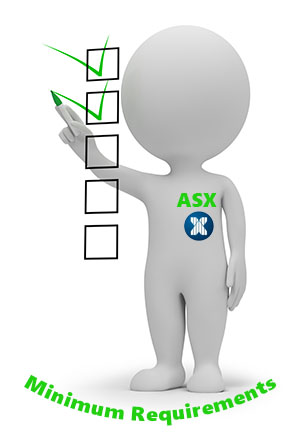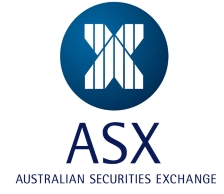ASX – History of the Australian Securities Exchange
The ASX, or Australian Securities Exchange, is one of the leading financial exchanges in the world, ranking within the top five, and is the first major market to open every morning. Sometimes known as the Sydney Stock Exchange, it is the operator of Australia’s most important securities exchange. It is home to some of the top global technology, finance and resource companies, and has a market capitalisation of about $1.5 trillion, with its $47 trillion interest rate derivatives market being the biggest in Asia, and one of the largest in the world. There are over 2,000 companies listed with the ASX, and around 20 million equity trades take place every month. The ASX has world-class regulation and meets the most stringent of global standards, with their clearing houses being some of the best-capitalised and most secure worldwide. The Australian Securities Exchange is also a public company, with its own shares being traded on the ASX, although it cannot regulate itself, and is therefore regulated by ASIC (the Australian Securities and Investments Commission).
| Broker | Bonus | More |
|---|
Products and Services Offered by the ASX
The ASX offers a comprehensive range of products to suit the needs of investors. These include:
- Shares
- Indices
- Bonds
- Hybrid securities
- ETFs and ETPs
- Managed funds
- Warrants
- Options
- Index derivatives
- Interest rate derivatives
- Grain derivatives
- Energy derivatives
- Market-making incentive schemes
A full range of services are also offered, including:
- Issuing products
- mFund settlement
- Trading services
- Technical services
- Clearing
- Clearing risk management
- OTC clearing
- Settlement
The ASX website also offers plenty of educational resources, including investment videos, online trading courses, webinars, seminars, a financial newsletter, brochures and a glossary of common terms.
A Brief History of the ASX
The Australian Securities Exchange has origins that date back to the middle of the 19th century, when there were six separate exchanges within each of Australia’s state capitals: Sydney, Melbourne, Brisbane, Hobart, Adelaide and Perth. The initial interstate conference was held in 1903, with the exchanges meeting thereafter informally until 1937, at which time the AASE (Australian Associated Stock Exchanges) was set up, with each exchange sending representatives of their own. Over the years, uniform rules were set up by this body regarding broker regulation, commission rates and listing rules. In 1987 the six independent stock exchanges were merged into one body as a result of legislation passed by the Australian Parliament. This organisation was called the Australian Stock Exchange Ltd (ASX), and in October 1998 it became the first exchange worldwide to quote its own shares on its own market. The ASX was then merged with the Sydney Futures Exchange in 2006, and took the name Australian Securities Exchange. More recently, a new group structure has been launched by the ASX to enable it to achieve a better position within the modern financial market environment, and since 2010 it has been known as the ASX Group.
The Trading Systems of the ASX
There are two trading platforms offered by the ASX group – ASX equity securities are traded through ASX Trade, while ASX Trade24 is used for derivative securities trading. ASX uses the Genium INET system, which has also been adopted by many other stock exchanges worldwide due to its rapidity and its functional multi-asset trading platform. The ASX’s normal business days are Monday to Friday, with no trading taking place on public holidays, including New Year’s Day, Australia Day, Easter Monday, Good Friday, Anzac Day, the Queen’s birthday, Christmas Day and Boxing Day. Every trading day begins with a pre-market session that is held between 7 AM and 10 AM AEST, followed by a standard trading session between 10 AM and 4 PM AEST. A single price auction is also held daily between 4:10 PM and 4:11 PM in order to set the day’s closing prices.
Which Products are Traded on the ASX?
The ASX allows a full range of services and products to be traded, including futures, shares, contracts for difference (CFDs), exchange traded funds, exchange traded options, real estate investment trusts, warrants, interest rate securities, and listed investment companies. In terms of market capitalisation, the biggest stocks traded on the ASX include the Commonwealth Bank of Australia, Telstra, BHP Billiton, Westpac, Rio Tinto, the Australia and New Zealand Banking Group, and the National Australia Bank. A fairly high proportion of the financial market is made up of the mining sector, with the index being heavily weighted in favour of commodities. This means that any change in pricing in the commodities market can have a major impact on the exchange. The S&P/ASX 200 is the ASX’s major market index, and is made up of the exchange’s top 200 shares. This is commonly quoted alongside the All Ordinaries Index, which used to be more significant than the S&P/ASX 200, and which still runs alongside it. For bigger stocks, there are two other indices: the S&P/ASX 50 and S&P/ASX 100.
Minimum Requirements for Companies to List with the ASX

- The company must be traded with a lowest price of $0.20c.
- Each company that wishes to list must have made at least $1 million net profit over the course of the last 3 years, and a minimum of $400,000 net profit within the last year.
- Should the company not be able to meet these criteria, they must hold a minimum of $3 million in Net Tangible Assets, or have a minimum market capitalisation of $10 million.
- Regular financial reporting must take place.
There are also specific rules regarding the spread of shareholders, dual listings for companies that are already listed on a foreign exchange, and the amount of working capital held by the company.
Other educational materials
- CAC 40 Index
- Dow Jones Industrial Average
- Euronext
- FTSE 100 Index
- FTSE AIM All-Share Index
- FTSE All-Share Index
Recommended further reading
- Does fundamental indexation lead to better risk‐adjusted returns? New evidence from Australian Securities Exchange. Basu, A.K. and Forbes, B., 2014. Accounting & Finance, 54(3), pp.699-728.
- Non-scheduled news arrival and high-frequency stock market dynamics: Evidence from the Australian Securities Exchange. Smales, L. A. (2014). Research in International Business and Finance, 32, 122-138.



